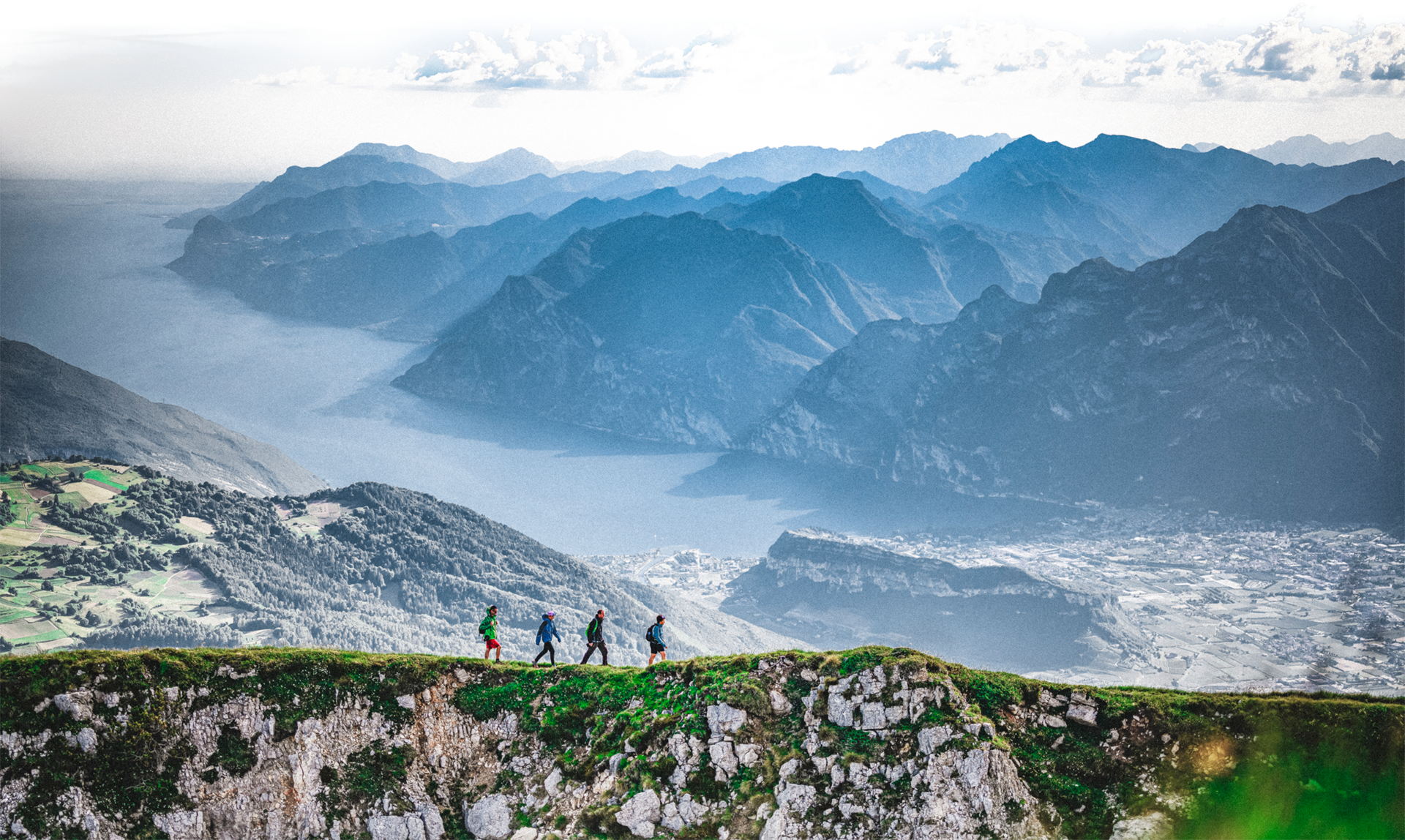
The freshwater sea of the Alps
Lake Garda is the largest lake in Italy. Its name derives from the from the Germanic word warda, meaning "place of guard” or "place of observation"; it is also known as Benaco, which appears to derive from the Celtic language.
With its 52 metres of length, a maximum depth of 350 metres and a surface of 370 square metres, it spans 3 regions: Trentino Alto Adige, Lombardy and Veneto. While it is wider in its southern part, the lake is narrower in the north and surrounded by mountains: in fact it is often compared to a Nordic fjord!
But its resemblance to the Great north is only skin deep: its vegetation and climate are mostly Mediterranean. This is exactly why Lake Garda is the ideal destination for those who want to treat themselves to a holiday that feels like a seaside break, but is actually in the mountains.
And the conformation and climate of the lake are also the reason why Garda Trentino, above all, has in time become a Mecca for sailing and windsurfing enthusiasts: consistent, regular winds make it a perfect regatta course.
Lake Garda has always played a starring role as a communication route and meeting place between north and south. The many villages dotted on its shores bear the signs of a vibrant history, which has witnessed the alternation of various powers, all ready to do battle for the supremacy of the area: from the Italian lords to the Habsburg Empire, everyone wanted to take control of the lake at all costs.
And this meeting of different cultures and traditions can also be found in the cuisine of the Garda area: in the south it is closer to the Italian tradition and in the north it is more reflective of the Central European heritage. But there is one element that is a constant presence: the precious olive oil made from the olive groves that colour the shores of the lake.

